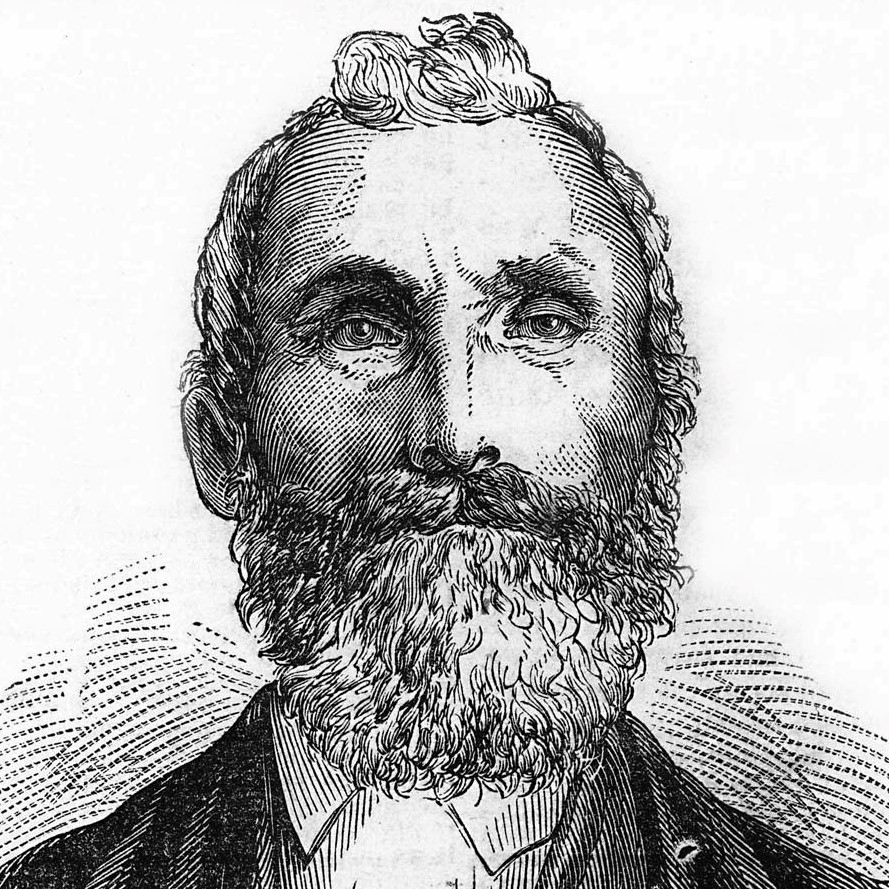
d: 1874
Franklin B. Evans
Summary
Name:
Franklin B. EvansNickname:
The Northwood MurdererYears Active:
1850 - 1872Status:
ExecutedClass:
Serial KillerVictims:
2+Method:
Bludgeoning / Rape / StrangulationDeath:
February 17, 1874Nationality:
USA
d: 1874
Franklin B. Evans
Summary: Serial Killer
Name:
Franklin B. EvansNickname:
The Northwood MurdererStatus:
ExecutedVictims:
2+Method:
Bludgeoning / Rape / StrangulationNationality:
USADeath:
February 17, 1874Years Active:
1850 - 1872Date Convicted:
February 5, 1873bio
Franklin B. Evans was born in 1807 in Strafford, a rural town in southeastern New Hampshire. Not much is recorded about his early family life, but from a young age, Evans developed a taste for wandering. He led an itinerant lifestyle, frequently relocating between various towns across New Hampshire, including Manchester, Concord, Allenstown, Derry, and Candia.
Evans was married three times over the course of his life and was known to have fostered two children. To those around him, he was perceived as strange but generally harmless. At times, he claimed to be a botanist, a magician, and even a Millerite preacher, capitalizing on religious fervor during the Second Great Awakening. He was charismatic but quickly exposed as a fraud in many of the places he visited.
Despite his eccentricity, Evans managed to support himself by doing odd jobs for farmers and occasionally preaching to small crowds. He was described by locals as “shrewd,” and although he drew suspicion from some, many dismissed his behavior as merely quirky rather than dangerous.
In 1872, Evans found himself boarding with Sylvester Day in Northwood, New Hampshire. Sylvester was the brother of Evans’s first wife, and the household was familiar and welcoming. Evans was known to be friendly with the family, especially with the children. He worked as a farmhand for nearby properties and blended quietly into the rural New England life.
murder story
On September 24, 1872, Georgianna “Georgie” Lovering, a 14‑year‑old girl living in Northwood, New Hampshire, went missing under eerie circumstances. That morning, she was seen heading into the woods with her eccentric great‑uncle, Franklin B. Evans.
By the evening, Georgie had not returned. A frantic search began almost immediately. In the forest, searchers discovered her shawl, a broken hair comb, and signs of a struggle. Meanwhile, Evans’ behavior grew even more bizarre, odd explanations and sketchy stories drew the attention of neighbors and local authorities.
Two days later, on September 26–27, Georgie’s grandmother raised the alarm, and Sheriff Henry A. Drew began investigating. Under questioning, Evans initially insisted Georgie was alive and had eloped with a mysterious man named “Webster,” even offering to help lead officers to town to find him, first suggesting he might be from Kingston, then Kensington, but no such person existed in either town.
As the pressure mounted, Evans cracked. Late that night, alone with Sheriff Drew, he admitted he had done "something terrible.” Drew cleverly promised to help Evans escape to Canada if he revealed the body’s location. Evans, believing the offer, finally agreed, which led him deep into a swampy hollow in the woods.
By lantern light, Drew discovered Georgie’s body, mutilated, strangled, and hidden beneath leaves and debris. It was a sight that horrified everyone involved. When officers returned with medical aid, they confirmed bruising around the neck and extensive mutilation. Evans, upon seeing the body, let out a chilling shriek that echoed through the forest.
In the aftermath, Evans was taken into custody and later confessed that he'd raped and strangled Lovering, then mutilated her body, and buried the severed organs in places so grotesque they stunned even hardened lawmen.
Once jailed, Evans’ confessions expanded. He admitted to the kidnapping, rape, and murder of a 5‑year‑old girl in Derry, New Hampshire, in October 1850, whom he strangled and intended to dissect, but abandoned the act due to guilt, burying the body under a chestnut stump.
He also hinted at involvement in additional unsolved cases across New England: a rape and throat‑cutting of a 14‑year‑old girl in Strong, Maine, 1862; the notorious Bussey’s Woods double murder in Roxbury (now Boston) on June 12, 1865, involving Isabella (14) and John Joyce (12); and even a woman found dead near woods in Fitchburg, Massachusetts, on June 10, 1872. Though he never fully admitted guilt in those cases, the confessions, his movements, and access to those regions cast deep suspicions.
The trial began on February 3, 1873, presided over by Justices Doe and Ladd. Two days later, Evans attempted suicide with his suspenders in court but was foiled. His defense, insanity, collapsed under psychiatric testimony that he understood his actions clearly. The jury deliberated for only half an hour before finding him guilty of first‑degree murder, and he received a death sentence by hanging.
While awaiting execution, Evans experienced vivid hallucinations and expressed regret not for the murders, but for not heeding his supposed calling as a preacher; he believed his sins would be redeemed in death. He wrote a confession, admitting only to the Derry and Georgianna killings, and also requested his body be dissected at Dartmouth College’s anatomical school, asking that proceeds go to his son.
On February 17, 1874, the sentence was carried out at precisely 11:06 a.m. at the New Hampshire State Prison in Concord. Evans climbed the scaffold calmly, but his knees trembled. After the noose was placed and the trap sprung, he dangled for nearly twenty minutes before death was declared. True to his request, his body was delivered to Dartmouth Medical College that evening and used for dissection by students.